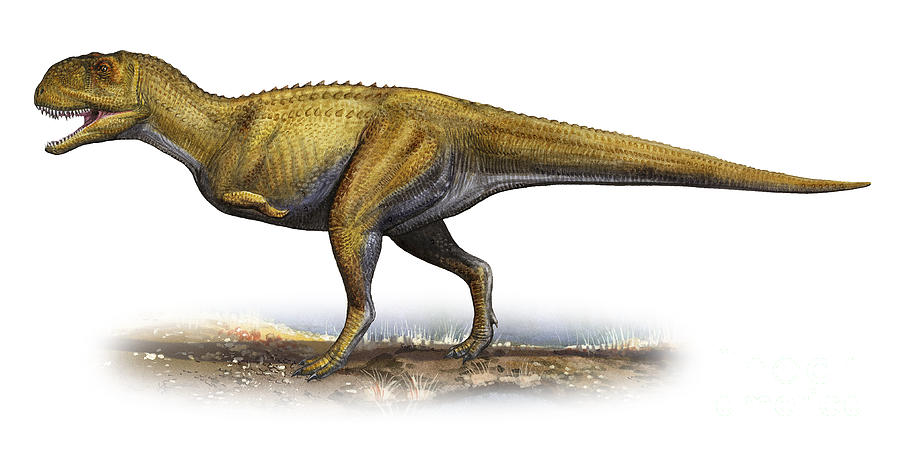|
|
Post by dinosauria101 on Jul 15, 2019 17:33:00 GMT 5
Ekrixinatosaurus novasi Ekrixinatosaurus (Explosion-Born Reptile) is a genus of dinosaur which lived during the Late Cretaceous. It was a theropod believed to be one of the abelisaurs. Its fossils have been found in Argentina. The type species, Ekrixinatosaurus novasi, was first described in 2004 by Argentinian paleontologist Jorge Calvo, and Chilean paleontologists David Rubilar-Rogers and Karen Moreno. Ekrixinatosaurus is perhaps the largest abelisaurid known to date, estimated as 10 to 11 metres (33 to 36 ft) long. It was also particularly robust and had a relatively large head, suggesting that it was a powerful predator or scavenger, able to scare other predators away from their kills. NOTE: Ekrixnatosaurus was actually only about 7.4 meters long  Eocarcharia dinops Eocarcharia (meaning "dawn shark") is a genus of carcharodontosaurid theropod dinosaur from the Early Cretaceous Elrhaz Formation that lived in the Sahara 112 million years ago, in what today is the country of Niger. It was discovered in 2000 on an expedition led by University of Chicago paleontologist Paul Sereno. The type and only species is Eocarcharia dinops. Its teeth were shaped like blades and were used for disabling live prey and ripping apart body parts. Eocarcharia’s brow is swollen into a massive band of bone, giving it a menacing glare (leading to the specific name dinops or "fierce-eyed"). It may have reached lengths of 6–8 m (19.7–26.2 ft).  Credit to Wikipedia |
|
|
|
Post by Infinity Blade on Jul 16, 2019 22:52:47 GMT 5
Interestingly enough, GSP's 2016 edition of The Princeton Field Guide to Dinosaurs claims that C. iguidensis would have weighed in at 4t and been 10m long. If I get any further quantification corroborating or challenging this mass and length figure, that'd be welcome. His estimate for the size of Ekrixinatosaurus is pretty damn conservative: 800 kg (at 6.5m). But a 2016 study specifically dedicated to the size of known abelisaurids ( Grillo & Delcourt, 2016) estimates its body length at 7.4m (± 0.3 m). That Ekrixinatosaurus wasn't 10-11m long wasn't new to me at the time (I think blaze and some others had found that that figure didn't hold water), but hey, at least there is an academic paper that supports it. |
|
|
|
Post by dinosauria101 on Jul 16, 2019 22:55:38 GMT 5
His estimate for the size of Ekrixinatosaurus is pretty damn conservative: 800 kg (at 6.5m). But a 2016 study specifically dedicated to the size of known abelisaurids ( Grillo & Delcourt, 2016) estimates its body length at 7.4m (± 0.3 m). That Ekrixinatosaurus wasn't 10-11m long wasn't new to me at the time (I think blaze and some others had found that that figure didn't hold water), but hey, at least there is an academic paper that supports it. If that's the case, this might be a bit one sided. Maybe we can at least discuss parity (like creature suggested in the Amphicyon vs Utahraptor thread, which is now a mismatch since the former wasn't quite as big as we thought. EDIT: I will change this to Eocarcharia |
|
|
|
Post by Infinity Blade on Jul 16, 2019 23:05:45 GMT 5
I seriously doubt it. Assuming the size figure for C. iguidensis is accurate, I cannot think of any good reason to suppose that adult body size for these two species overlapped at all. If two species don't overlap in size as adults, there's no good justification for discussing parity here.
|
|